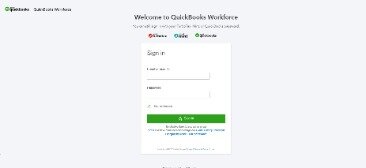Contents:
- .By using this service, some information may be shared with YouTube.
- Record transactions on the general ledger/sub-ledger immediately
- Step #5: Record All The Adjustments As Per Cash Book Into Your Company’s General Ledger Cash Account
- Practice: Preparing a Bank Reconciliation
- Understanding the Bank Reconciliation Statement

This drives greater efficiency in their business and saves company resources. It also allows finance teams to spend more time on value-add tasks, such as evaluating data to inform company strategy and key decisions. The more frequently you produce bank reconciliations, the more accurate your financial management will be, with reduced chances of error or irregularities. It’s good practice to prepare a bank reconciliation statement every time you receive a statement from the bank – for large businesses this may be on a daily basis. For most organisations, bank reconciliation usually occurs at the end of each week. It’s customary to record depreciation and other adjusting entries at the end of the accounting period, after you’re sure there are no errors in your books.
Make a list of these normal balance and make the required changes to the cash book. This is the statement you need to begin the bank reconciliation process. Reconciling bank statements typically happens at the end of each month when your financial institution sends over your statement. Check and tick all the credit entries as reflected in Bank Ledger with the debit side in the bank statement, identify which are missed. Another important reason to perform a bank reconciliation is to improve internal control over your company’s cash. Ideally, the reconciliation will be done by someone other than the person handling and recording receipts and payments.
.By using this service, some information may be shared with YouTube.
If you’re reconciling your personal account, you should have a list of deposits in your checkbook- along with your deposit slips. Review to see if those checks posted to the current month’s bank statement. Nowadays, many companies use specialized accounting software in bank reconciliation to reduce the amount of work and adjustments required and to enable real-time updates. Compare the amount of each recorded deposit in the debit column of your cashbook with the credit side of the bank statement. Now that you’re confident in the accuracy of your account balances, you can generate the basic financial statements to analyze your general ledger transactions. After you’ve reconciled your cash accounts, you can move onto your other, smaller accounts.
What Is A Bank Reconciliation Statement – Bankrate.com
What Is A Bank Reconciliation Statement.
Posted: Thu, 10 Nov 2022 08:00:00 GMT [source]
Journal entries, also known as the original book of entries, refer to the process of recording transactions as debits and credits. Once the journal entries are recorded, the general ledger is prepared. Typically, the difference between the cash book and passbook balance arises due to the items that appear only in the passbook. Therefore, it makes sense to first record such items in the cash book to determine the adjusted balance of the cash book.
Mitch has more than a decade of experience as personal finance editor, writer and content strategist. Before joining Forbes Advisor, Mitch worked for several sites, including Bankrate, Investopedia, Interest, PrimeRates and FlexJobs. Jill Newman is a Certified Public Accountant in Ohio with over 20 years of accounting experience. Bank reconciliations are performed at consistent intervals, typically on a weekly or monthly basis.
Record transactions on the general ledger/sub-ledger immediately
This helps reduce errors and makes the reconciliation process more manageable. Here are the best practices businesses must follow while reconciling their bank statements. Let’s say Company AY is doing its bank reconciliation and has asked for detailed bank statements. The statements will contain all the necessary information like checks cleared and rejected by banks, transaction charges, and bank fees. Bank reconciliation is a subset of the monthly, quarterly, and yearly close process and is not generally done on its own. Accountants spend a lot of time on this step to ensure the checks are thorough and even minute errors are spotted.

When it comes to optimizing accounts payable management, reconciling your bank account is critical to staying on track. If you don’t ensure the business and bank are on the same page, tiny mistakes can snowball into huge problems. Now, a general ledger reconciliation looks different — and is easier — thanks to the advent of accounting software.
Step #5: Record All The Adjustments As Per Cash Book Into Your Company’s General Ledger Cash Account
Due to the reasons listed above, the closing bank balance in your books of accounts and actual bank balance as per bank will not match. This means, the bank balance what you think you have it your bank is not the one available in the bank. Deciding basis the book balance will put you in an uncomfortable situation.
Compare your personal transaction records to your most recent bank statement. First, make sure that all of the deposits listed on your bank statement are recorded in your personal record. If not, add the missing deposits to your records and your total account balance. If a $10 service fee is posted to the bank statement, for example, it would need to be deducted from the cash account. Until you post the amount to your cash records, it is a reconciling item. Next, begin with preparing the bank reconciliation statement by updating the cash book balance.

It helps to detect that all transactions in books of accounts are recorded. It gives a clear picture of what Bank is reflecting balance and what books of accounts are reflecting the bank balance. You need to know that the amount of cash that is reported on your company’s balance sheet is accurate. The purpose of a bank reconciliation is to ensure the additions and deductions on the bank statement are compared with the items that are entered in your company’s general ledger.
If the figures are equal, then a successful bank reconciliation statement has been prepared. For example, a business has an operating account with a balance of $15,000 on July 1. During the course of the month, they write three checks for $1,000, $397, and $1,900. According to their reconciliation statement, they have a balance of $18,703, but the book balance shows a balance of $18,648. Upon looking at the bank reconciliation statement, they found that they didn’t record the account’s $25 monthly service fee. They also find that the check for $397 was mistakenly cashed for $367 instead.
Practice: Preparing a Bank Reconciliation
The very purpose of reconciling bank statements with your business’ cash book is to ensure that the balance as per the passbook must match with the balance as per the cash book. Bank reconciliation is a part of the internal controls of a company. Bank reconciliation plays a crucial role in the internal control process of a company and helps in detecting fraud and error in the process. When preparing a bank reconciliation, the company must look for two types of differences, timing and unrecorded differences. Preparing bank reconciliation requires companies to follow a 5-step process.
You can view your bank activity online, or ask a bank clerk for a printout of activity during the time period you are reconciling. The printout usually includes the bank account’s balance as of the date you are reconciling. If necessary, you can find the balance yourself by starting with the previous month’s ending balance, then adding and subtracting based on the activity listed on the printout.
What Is a Bank Reconciliation Statement, and How Is It Done? – Investopedia
What Is a Bank Reconciliation Statement, and How Is It Done?.
Posted: Sat, 25 Mar 2017 21:37:17 GMT [source]
Or any other errors, specify such differences in your company’s bank reconciliation statement. Finally, when all such adjustments are made to the books of accounts, the balance as per the cash book must match with that of the passbook. Hence, it needs to be deducted from the bank’s closing cash balance for your account. Presented but not cleared is a reconciling item and hence needs to be deducted from the bank’s closing cash balance for your account. The very idea of locating differences is to update your books of accounts in order to match them with the bank statement.
Understanding the Bank Reconciliation Statement
You need to subtract both checks from your bank balance, as well as any other checks listed in your check register that haven’t cleared. Most business owners receive a bank statement, either online or in the mail, at the end of the month. Most business accounts are set up to run monthly, though some older accounts may have a mid-month end date. The deposit could have been received after the cutoff date for the monthly statement release. Depending on how you choose to receive notifications from your bank, you may receive email or text alerts for successful deposits into your account. Contact your bank to investigate further and find where the issue lies.
Import your TD Bank Statement to Bank Reconciliation in Microsoft … – MSDynamicsWorld
Import your TD Bank Statement to Bank Reconciliation in Microsoft ….
Posted: Fri, 03 Feb 2023 08:00:00 GMT [source]
The ability to quickly detect errors such as missed payments, double payments, miscalculations, etc. Take the adjusted closing balance of the Bank in Bank Reconciliation Statement. Adjusting entries for accrued expenses and deferred revenue must eventually be reversed to avoid misstating your financial position.
The bank records all transactions in a bank statement whereas the customer records all their bank transactions in a cash book. ABC Co. can start from the adjusted bank book balance and adjust the timing differences to it to reach the bank statement balance. It can also adjust the balances to the bank statement to reach the adjusted bank book balances instead. An NSF check is a check that has not been honored by the bank due to insufficient funds in the entity’s bank accounts.
Create correcting entries
When your business issues to its suppliers or creditors, such amounts are immediately recorded on the credit side of your cash book. When you compare the balance of your cash book with the balance showcased by your bank passbook, there is often a difference. This means that the bank balance of the company is greater than the balance reflected in its cash book. These items are typically service fees, overdraft fees, and interest income.
Account by account, comb through all the transactions listed on your general ledger for the period. Make sure you have documentation supporting the date, dollar amount, and accounts involved. This content is for information purposes only and should not be considered legal, accounting, or tax advice, or a substitute for obtaining such advice specific to your business. No assurance is given that the information is comprehensive in its coverage or that it is suitable in dealing with a customer’s particular situation. Intuit Inc. does not have any responsibility for updating or revising any information presented herein.

At the end of the period, there are going to be differences between the balances in both the documents. To reconcile the differences in both balances, the company must prepare a bank reconciliation statement. The information on the bank statement is the bank’s record of all transactions impacting the company’s bank account during the past month. Compare the ending balance of your accounting records to your bank statement to see if both cash balances match.
- Typically, the difference between the cash book and passbook balance arises due to the items that appear only in the passbook.
- For this reason, in your bank account, deposits are credits and checks and other reductions are debits .
- So, it’s essential to see whether all the checks that you have recorded match the bank’s clearance list.
- In simple words, it is the process of reconciling the balance of bank account in books of the Company with the balance as reflected in the Books of Bank.
Therefore, you record no entry in the business’ cash book for the above items. As a result of such direct payments made by the bank on your behalf, the balance as per the passbook would be less than the balance as per the cash book. From its customers, such amounts are recorded immediately on the debit side of the cash book.
This reduces the risk of anyone using the company’s cash improperly. Accounting errors, such as missed or double payments, are not uncommon. Bank reconciliation helps you to spot such accounting errors early. Most businesses want to know of any issues before they cause embarrassing situations. Then, you’d open the general ledger to update the affected account balances.